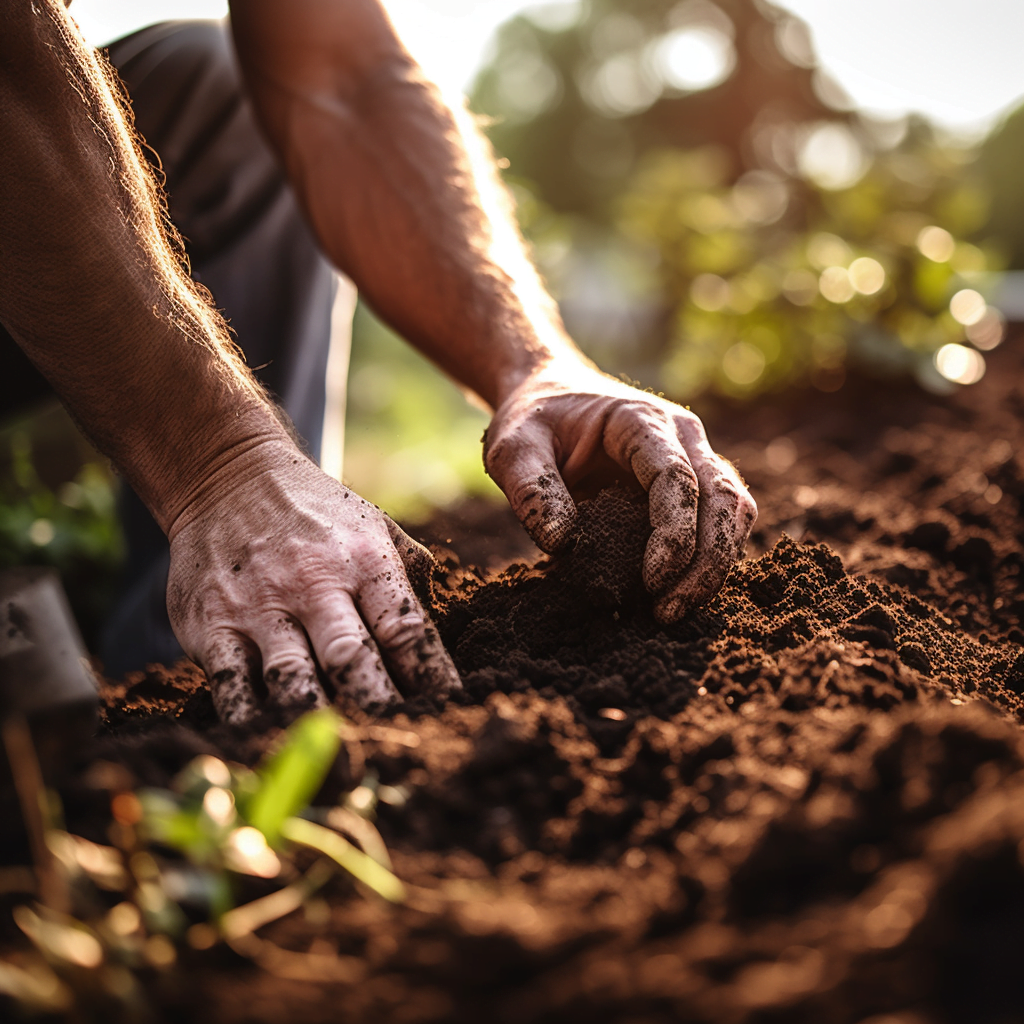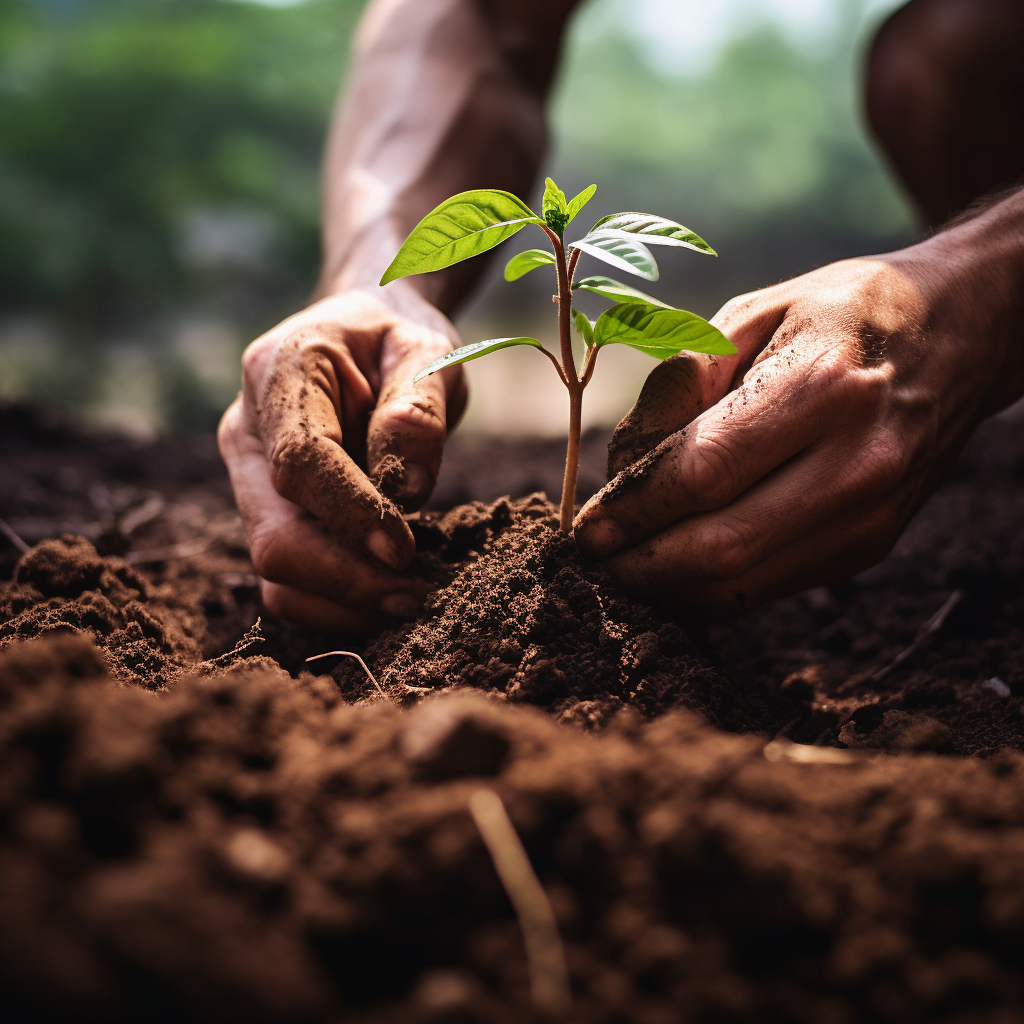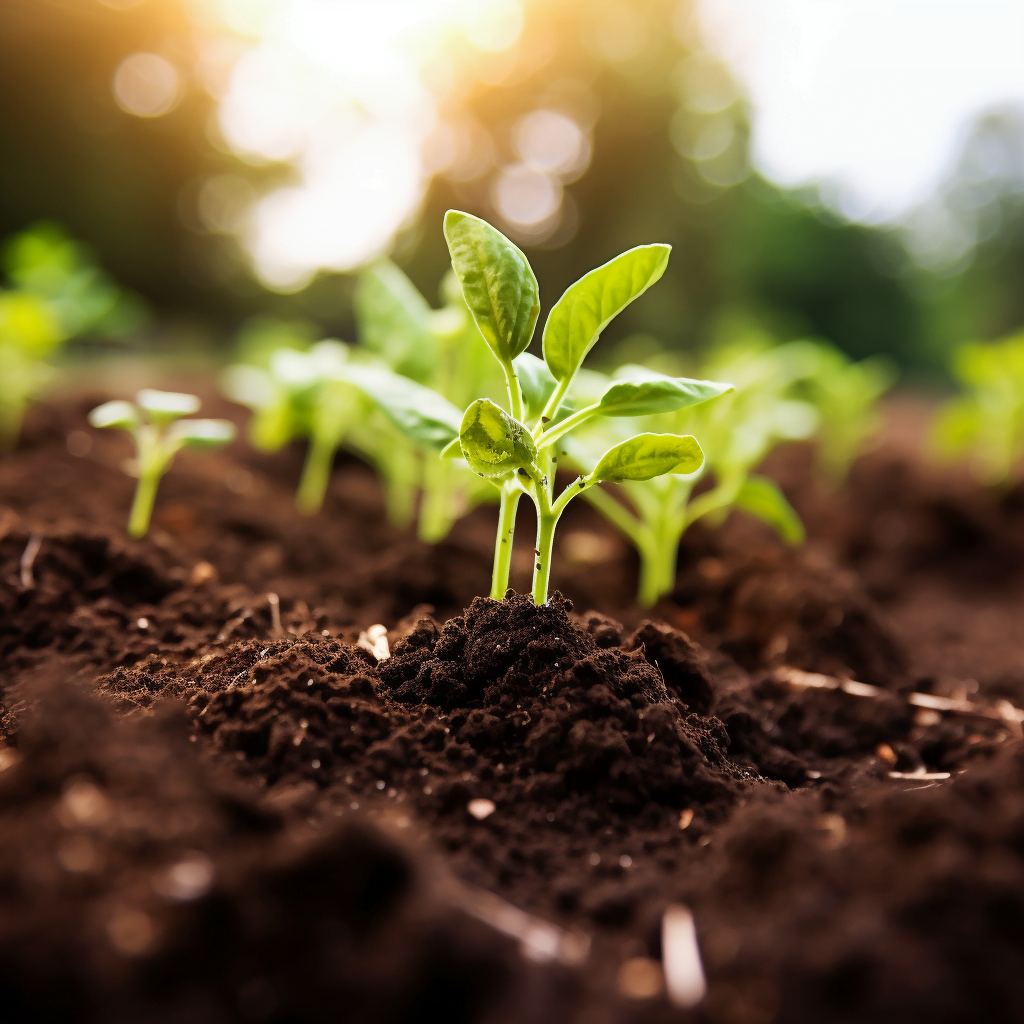I’m here to talk about planting soil and whether or not you actually need it for your home gardening adventures. It’s a topic that often raises questions and sparks debates among gardeners. So, let’s get right into it and explore the world of planting soil. Whether you’re a seasoned green thumb or just starting out, understanding the importance of soil in your gardening journey is essential. Are you ready to dig in?
Understanding Planting Soil
What is planting soil?
Planting soil, also known as gardening soil or growing media, is a specially formulated medium used for planting and growing plants. It is designed to provide the necessary environment for plants to thrive by providing essential nutrients, water retention, and proper drainage. Planting soil differs from regular soil in that it is specifically created and optimized for plant growth.
Importance of using planting soil
Using quality planting soil is crucial for the success of your garden. The natural soil in your garden may not always be ideal for growing plants. It may lack the necessary nutrients, may not drain well, or may be too compacted. Planting soil addresses these issues and ensures optimal plant growth and health. It provides the necessary nutrients, improves soil structure, enhances drainage, retains moisture, and facilitates root growth.
| Factor | Description | Importance |
|---|---|---|
| Type of Soil | Different soils (topsoil, potting soil, garden soil, compost) have unique characteristics. | Choosing the correct type based on your gardening setup (e.g., container, raised bed) ensures proper nutrient balance and drainage, affecting plant health and growth. |
| Type of Plants | Plants have varying soil preferences in terms of nutrients, pH, and more. | Selecting soil that meets the specific needs of the plants you are growing can significantly impact their ability to thrive and produce. |
| Drainage | Soil’s ability to pass excess water through, preventing waterlogging. | Critical for plant health. Poor drainage can lead to root rot and other conditions detrimental to plant growth, while good drainage ensures root oxygenation. |
| Nutrient Content | The presence of essential nutrients like nitrogen, phosphorus, and potassium. | Essential for plant growth. The soil needs a balanced nutrient content to support various stages of plant development, from root growth to flowering and fruiting. |
| pH Level | A measure of the acidity or alkalinity of the soil. | Certain plants thrive in acidic soil, others in more alkaline conditions. Understanding and adjusting soil pH can dramatically impact plant health and yield. |
| Organic Matter | Materials like compost or peat moss that improve soil structure and fertility. | Enhances the soil’s water retention, supports beneficial microorganisms, and provides slow-release nutrients, contributing to long-term plant health and sustainable growth. |
| Soil Preparation | Steps involved in readying the soil for planting (clearing, amending, leveling, etc.) | Proper preparation helps in establishing a healthy growing environment, ensuring that soil conditions are optimal for plant establishment and growth. |
| Container Gardening | Specific considerations for plants grown in containers, using potting soil or special mixes. | Requires well-draining, nutrient-rich soil since plants are entirely dependent on the container’s soil. Specialized soil helps prevent over-watering issues common in containers. |
Types of Planting Soil

Topsoil
Topsoil is the uppermost layer of soil, typically the top 2 to 8 inches. It contains a mixture of organic matter, minerals, and microorganisms. Topsoil is commonly used to fill garden beds, level the ground, or create new planting areas. However, it is important to note that topsoil alone may not provide all the necessary nutrients for your plants, and it may need to be supplemented with other planting soil types.
Potting Soil
Potting soil, also known as container soil or potting mix, is specifically formulated for plants grown in pots, containers, or indoor settings. It is generally lighter, well-draining, and has a balanced nutrient content. Potting soil is typically a blend of natural ingredients such as peat moss, perlite, compost, and vermiculite. It provides good aeration, moisture retention, and nutrient availability for potted plants.
Compost
Compost is a nutrient-rich organic material that is produced through the decomposition of organic matter, such as kitchen scraps, leaves, grass clippings, and yard waste. It is often mixed with other types of planting soil to improve its nutrient content and soil structure. Compost adds valuable organic matter to the soil, enhances water-holding capacity, and promotes healthy microbial activity.
Garden Soil
Garden soil refers to the soil that naturally exists in your garden or outdoor space. It varies in composition depending on your geographic location and the history of the area. While garden soil can be suitable for some plants, it may need amendments or supplements to provide the necessary nutrients and ensure proper drainage. Garden soil is often mixed with other types of planting soil to create a balanced growing medium.
Factors to Consider
Type of plants
Different plants have varying requirements when it comes to soil composition, pH level, and nutrient content. It is important to consider the specific needs of the plants you intend to grow when choosing the right planting soil. Some plants prefer acidic soil, while others thrive in alkaline conditions. Similarly, certain plants may require well-draining soil, while others prefer a moisture-retentive medium.
Drainage
Proper drainage is crucial for the health of plants. Excess water can lead to root rot and other fungal diseases, while insufficient drainage can cause waterlogged soil and suffocate plant roots. When selecting planting soil, consider the drainage characteristics of the soil mix and ensure that it is suitable for the plants you are planning to grow. A well-draining soil mix prevents water from accumulating around the roots, allowing them to access oxygen and nutrients.
Nutrient content
Plants require a balanced supply of essential nutrients for healthy growth. Planting soil should provide an adequate nutrient content to support the plants’ needs. Nutrients such as nitrogen, phosphorus, and potassium are essential for plant growth and development. Additionally, micronutrients like iron, zinc, and magnesium are also important for plants’ overall health. The nutrient content of planting soil can vary, so it is important to choose a mix that meets the specific nutrient requirements of your plants.
pH level
The pH level of soil refers to its acidity or alkalinity. Different plants thrive in different pH ranges, and it is essential to provide the appropriate soil pH for optimal growth. Most plants prefer a slightly acidic to neutral pH range of 6.0 to 7.0. However, some plants, such as blueberries, azaleas, and rhododendrons, prefer acidic soil with a pH below 6.0. Testing your soil’s pH and selecting planting soil that matches the desired pH level can help ensure the best growing conditions for your plants.
Organic vs. synthetic soil
Planting soils can be either organic or synthetic. Organic planting soil is derived from natural sources, such as compost, peat moss, and aged manure. It is rich in organic matter and supports healthy microbial activity in the soil. Synthetic or inorganic planting soil, on the other hand, is manufactured and contains mineral ingredients like perlite and vermiculite. Both types of soil have their advantages and disadvantages. Organic soil is often preferred for its sustainability and ability to improve soil fertility over time. Synthetic soil, however, may provide more consistent nutrient content and drainage properties.
Benefits of Using Planting Soil
Enhanced plant growth
Using quality planting soil ensures that plants have access to the necessary nutrients and growing conditions for optimal growth. The balanced nutrient content of planting soil promotes vigorous root development, lush foliage, and abundant blooms. With the right soil mix, plants are better equipped to withstand stress, resist diseases and pests, and produce higher yields.
Improved soil quality
Planting soil enriches the natural soil by adding organic matter, improving its structure, and enhancing microbial activity. The addition of organic matter from compost or other sources helps loosen compacted soil, improve water retention, and increase nutrient availability. Over time, the continuous use of planting soil can improve the overall quality of your garden soil, making it more fertile and suitable for healthy plant growth.
Better moisture retention
Proper moisture retention is essential for plant health, as it ensures that the roots have access to water when needed. Planting soil, with its well-balanced composition and moisture-holding capacity, helps prevent excessive evaporation and, at the same time, avoids waterlogging. This allows the plants to maintain adequate hydration without drowning their roots or causing stress.
Nutrient availability
Planting soil contains a blend of organic matter, compost, and other nutrient-rich components that provide a steady supply of essential elements for plant growth. The nutrients in the soil mix are made available to plants through a combination of microbial activity, chemical processes, and root absorption. This ensures that plants have access to a consistent and balanced nutrient supply throughout their growth cycle, promoting healthy development and stronger resistance to diseases and environmental stressors.
When Planting Soil May Not Be Necessary
Established gardens
If you have an established garden with well-amended soil, you may not need to use planting soil. Over time, the continuous addition of organic matter, compost, and mulch can improve the fertility and structure of the soil. Regularly amending the existing soil with organic matter and properly maintaining it can create a suitable environment for plant growth without the need for additional planting soil.
Hydroponics
Hydroponics is a method of growing plants without soil, using a nutrient-rich water solution instead. With this system, plants are provided with all the necessary nutrients directly through the water. Planting soil is not required in hydroponic setups, as the roots are suspended in the nutrient solution. Hydroponics is an efficient and controlled method of gardening, often used in indoor or urban settings.
Container gardening with pre-mixed soil
Container gardening involves growing plants in pots or containers. Many commercial potting mixes or pre-mixed soils are available specifically formulated for container gardening. These ready-to-use mixtures often contain a blend of organic matter, perlite, vermiculite, and other additives. If you are engaging in container gardening, you may find that pre-mixed soils provide the necessary characteristics for successful plant growth, eliminating the need for additional planting soil.
How to Choose the Right Planting Soil
Consider plant requirements
Before choosing a planting soil, it is important to consider the specific requirements of the plants you intend to grow. Different plants have different preferences when it comes to soil texture, drainage, and nutrient content. Research the plant’s ideal growing conditions and select a planting soil that meets those requirements.
Evaluate soil composition
To ensure that the planting soil will suit your plants’ needs, evaluate its composition. Look for a balance of organic matter, minerals, and additives like perlite or vermiculite. The soil’s texture should be loose and well-draining, while still retaining moisture. Avoid soils that are too heavy or compacted, as these can inhibit root growth and drainage.
Check for certification
When purchasing planting soil, look for products that have certifications or quality assurance labels. These certifications indicate that the soil meets certain standards and has been tested for quality and safety. Common certifications include those from organic organizations or reputable gardening associations.
Consult gardening experts or nurseries
If you are unsure about which planting soil to choose, consult with gardening experts or local nurseries. They can provide valuable advice based on your specific gardening needs and the plants you wish to cultivate. Experts can guide you in selecting the right planting soil and offer recommendations for your garden’s success.
Preparing Soil for Planting
Clearing the area
Before preparing the soil for planting, clear the area of any debris, weeds, or rocks. Removing unwanted materials ensures a clean and suitable environment for planting. Dig up any persistent weeds or grass, ensuring their roots are fully removed to prevent regrowth.
Amending the soil
Assess the quality of the existing soil and determine if any amendments are necessary. Organic matter, such as compost or well-rotted manure, can be added to improve the soil’s fertility and structure. Work the amendments into the soil using a garden fork or tiller, ensuring they are evenly distributed.
Mixing in planting soil
If the natural soil in your garden is insufficient for healthy plant growth, mix in planting soil appropriate for your plants’ needs. Blend the planting soil evenly with the amended soil, ensuring it is well-mixed throughout the planting area. This will create a balanced growing medium that supports root development and provides essential nutrients.
Leveling and tilling
After amending and mixing the soil, level the surface using a rake or gardening tool. This will ensure an even planting area and allow for proper drainage. Tilling the soil lightly can help break up any compacted areas and encourage better root penetration.
The Role of Planting Soil in Container Gardening
Benefits of using planting soil in containers
Using planting soil in container gardening provides numerous benefits for plant health and growth. Container plants rely solely on the soil within their pots for nutrients, moisture, and support. Planting soil provides a well-balanced growing medium that promotes healthy root development, proper moisture retention, and necessary nutrient availability.
Choosing the right potting soil
When selecting potting soil for container gardening, opt for mixtures specifically designed for this purpose. These mixes typically have a lighter texture to promote proper drainage and aeration. Look for potting soils that contain organic matter, perlite, and vermiculite to ensure optimal growing conditions for your container plants.
Container gardening tips
When using planting soil for container gardening, consider the following tips for successful plant growth:
Choose containers with drainage holes to prevent waterlogging and ensure proper drainage.
Use a layer of stones or a mesh screen at the bottom of the container to further enhance drainage.
Place a layer of mulch on top of the soil to help retain moisture and reduce weed growth.
Water container plants regularly, taking care not to overwater or allow the soil to dry out completely. Adjust watering frequency depending on the specific needs of the plants.
Consider fertilizing container plants periodically to replenish nutrients that may be washed away with watering. Use a slow-release or liquid fertilizer recommended for container gardening.

How to Make Your Own Planting Soil
Components of homemade planting soil
If you prefer to make your own planting soil, you can mix various components to create a suitable growing medium. Common components for homemade planting soil include:
Peat moss or coco coir: Provides moisture retention and serves as an organic amendment.
Perlite or vermiculite: Improves drainage and aeration, preventing soil compaction.
Compost: Adds organic matter, nutrients, and promotes microbial activity.
Sand or grit: Enhances drainage and prevents soil from becoming too compacted.
Bark or wood chips: Provides structure, helps retain moisture, and adds organic matter to the soil.
Mixing ratios
The mixing ratios of homemade planting soil can vary depending on the specific needs of your plants and the soil type in your region. A common starting point for a balanced homemade mixture is:
- 1 part peat moss or coco coir
- 1 part perlite or vermiculite
- 1 part compost or organic matter
- Optional: 1 part sand or grit, 1 part bark or wood chips
These ratios can be adjusted based on the specific plants you are growing, their moisture requirements, and the drainage characteristics of your soil.
Preparing the soil mixture
To prepare the homemade planting soil, thoroughly mix all the components together until well-blended. Consider wearing gloves and a mask to avoid inhaling fine particles while mixing. Once the mixture is evenly combined, it is ready to be used for planting. Ensure that the soil mixture is slightly moistened before planting, as this will help settle the components and provide optimal growing conditions for your plants.
Conclusion
Understanding the importance of planting soil is crucial for successful gardening and plant growth. Whether you choose to use commercially available planting soil or make your own, consider the specific requirements of your plants, the composition and nutrient content of the soil, and the level of drainage and moisture retention needed. By selecting the right planting soil, you can provide your plants with an optimal environment for growth, ensuring lush foliage, abundant blooms, and bountiful harvests.



